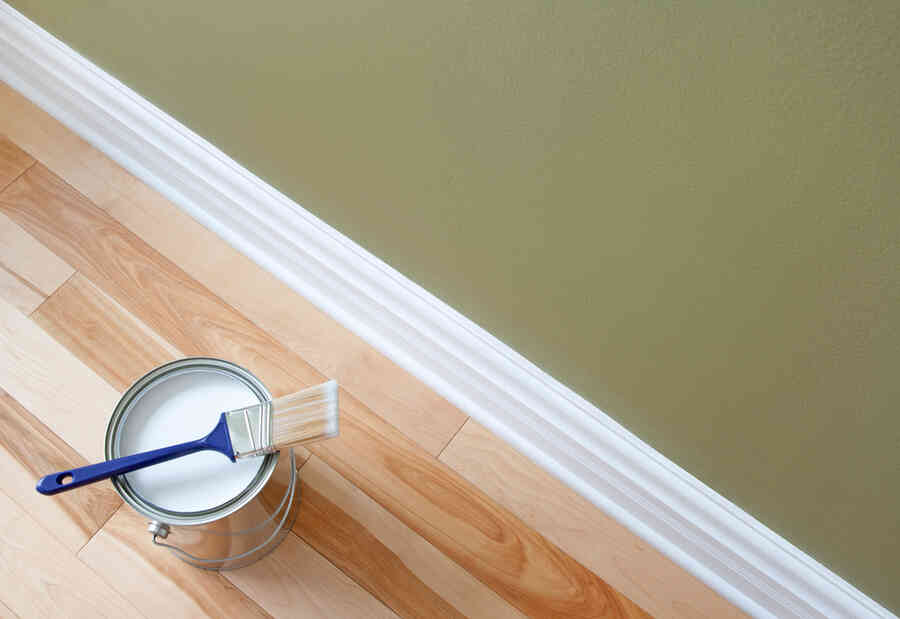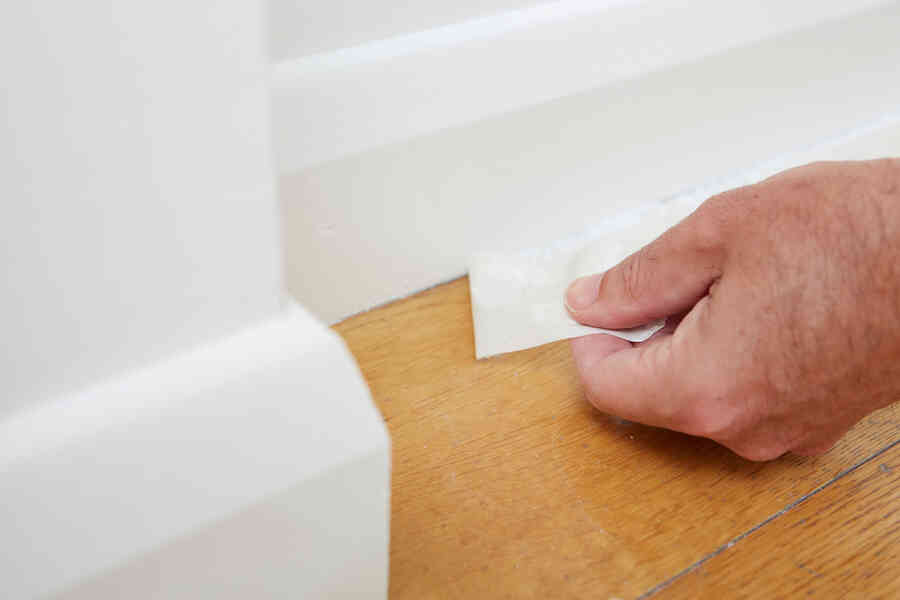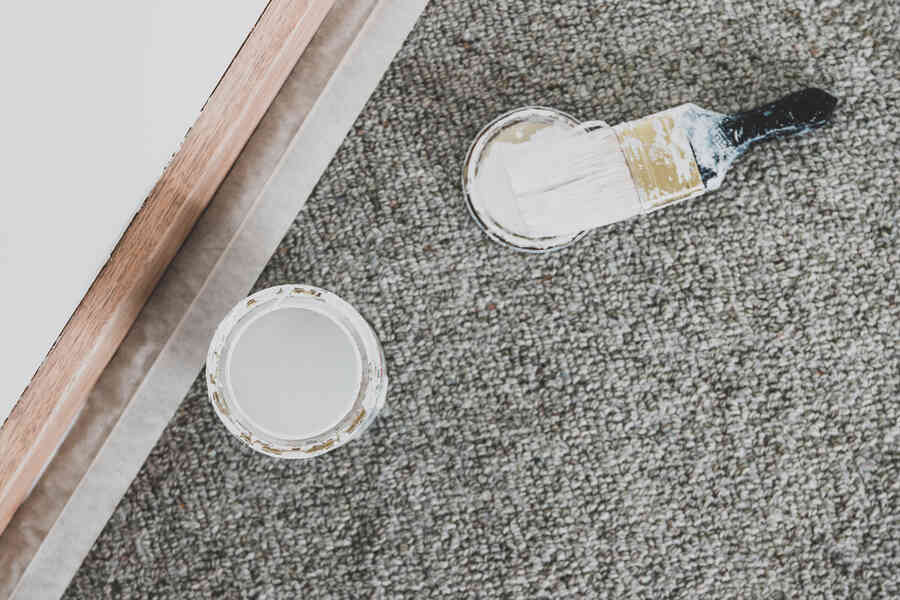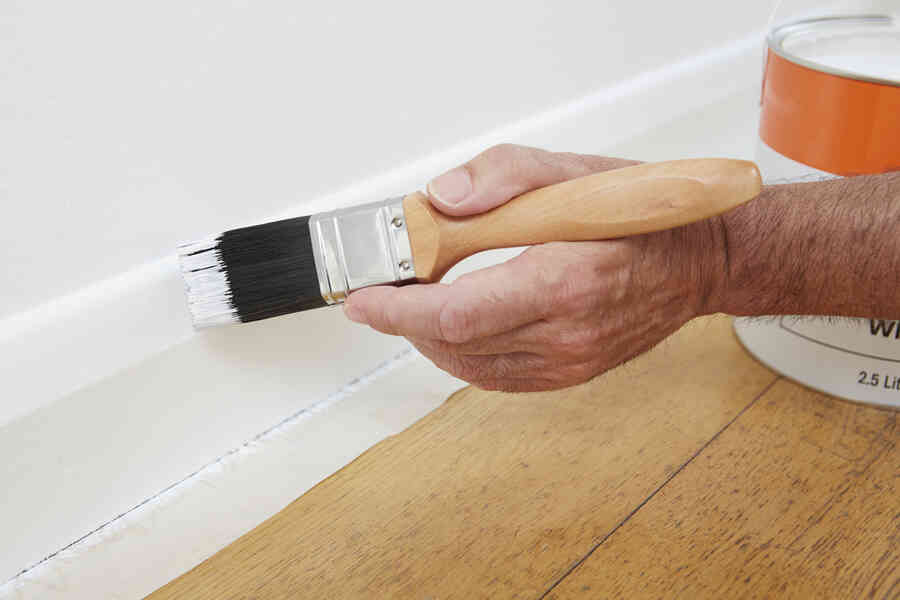If you are thinking of painting your skirting boards, selecting the right paint is critical to achieving a professional-looking finish that lasts. Different types of paint are available on the market, and choosing the wrong one can lead to unsatisfactory results, including peeling, chipping, and fading.
This article aims to provide you with The Ultimate Guide to Choosing the Best Paint for Skirting Boards. In this comprehensive guide, we will take a closer look at the different types of paint commonly used for skirting boards, the factors that you should consider when selecting the right paint for your project, and the steps to prepare and paint your skirting boards.
Whether you are painting your skirting boards for the first time or simply looking to touch them up, this guide will provide you with everything you need to know to achieve a durable and flawless finish.
Types of Paint to Consider

Choosing the right type of paint for your skirting boards can be confusing, with so many options available on the market. Here is a breakdown of some of the most commonly used types of paint and their characteristics:
1. Gloss Paint
Gloss paint is a popular choice for skirting boards as it offers a tough and durable finish that is easy to clean. The high shine of gloss paint makes skirting boards stand out and can add a touch of elegance to any room. It is also the most traditional type of paint used for skirting boards.
However, gloss paint can show up imperfections and brushstrokes more easily than other types of paint, and it tends to yellow over time. It is also highly reflective, which can make imperfections more noticeable.
2. Eggshell Paint
Eggshell paint has a low sheen finish that is less reflective than gloss paint, making it ideal for skirting boards in areas where lighting is more direct. It is also more forgiving when it comes to hiding imperfections and brushstrokes.
However, eggshell paint is not as durable as gloss paint and it has less resistance to stains and chipping. It is also more difficult to clean than gloss paint, so it may not be the best choice for high traffic areas.
3. Satinwood Paint
Satinwood paint has a subtle sheen that is less reflective than gloss paint, but more than eggshell paint. It offers good durability and resistance to chipping and scuffing. Satinwood paint is also easier to clean than eggshell paint.
However, satinwood paint can still show up imperfections and brushstrokes, particularly in areas with strong lighting. It is also less durable than gloss paint, so it may not be the best choice for high traffic areas.
4. Acrylic Paint
Acrylic paint is a water-based paint that is more environmentally friendly than oil-based paints. It dries quickly and has low levels of VOCs (volatile organic compounds) which makes it a good option for those who are sensitive to strong smells or chemicals.
Acrylic paint is also easy to clean and resistant to fading, cracking and chipping. It is a versatile paint that can be used on various surfaces, including skirting boards.
However, acrylic paint is less durable than oil-based paints, which means it may not be the best choice for high-traffic areas. It can also be difficult to apply evenly, so it requires more coats than other types of paint.
Factors to Consider When Choosing Skirting Board Paint

Choosing the right paint for your skirting boards is essential as it not only enhances the aesthetics of your room but also provides protection against wear and tear. Here are the key factors to consider when picking the right skirting board paint:
1. Durability
The durability of the skirting board paint is essential for determining how long it will last before it needs to be repainted. Skirting boards are vulnerable to scuffing, dents and impact. Hence, you need paint that can withstand this level of wear and tear. Therefore, it’s essential to choose a paint that provides a high level of resistance to scuffs and impact damage. Gloss paint is particularly durable and is used more commonly for this reason.
2. Finish
The finish is a crucial consideration when choosing skirting board paint as it directly affects the final look of your room. The type of finish you choose should not only match your decor style, but it should also suit your cleaning habits and the intended function of the room. Satinwood and eggshell are popular finishes for skirting boards as they offer a slight shine without being too glossy.
3. Ease of Application
The ease of application of the paint is also an important factor to consider. If you want to save time and effort, choose a paint that is easy to apply. For example, water-based paints are easier to apply than oil-based paints. They also dry faster, and are less prone to running, which makes them more forgiving for those who lack painting experience.
4. Drying Time
The drying time of the paint is also an important factor to consider. Some paints dry quickly, while others take longer to dry. Water-based paints usually dry much faster than oil-based paints, but they might require more coats.
5. VOC Content
Volatile Organic Compounds (VOCs) are solvents that are released as paint dries, which can be harmful to your health – especially when painting in a confined space. It’s, therefore, essential to choose paint that has low VOC content. When choosing your skirting board paint, ensure it is labelled as low VOC or VOC-free. This will ensure that you are not inhaling harmful chemicals, and the air quality in your home remains healthy.
By considering these factors, you will be able to select the right paint for your skirting boards. Keep in mind that every material and paint has its advantages and disadvantages. Choose a paint that suits your budget, aesthetic appeal and functionality.
Preparation Before Painting Your Skirting Boards

Proper preparation is key to achieving a successful painting project, and this is especially true when it comes to skirting boards. Before you start painting your skirting boards, there are several preparatory steps you need to take to ensure the paint adheres properly and looks great.
1. Cleaning
The first step in preparing your skirting boards for painting is to thoroughly clean them. Use a mild detergent solution or sugar soap to remove any dirt or grime that may have accumulated on the boards. Be sure to rinse the boards thoroughly with clean water and let them dry completely before proceeding.
2. Sanding
Sanding is an important step in creating a smooth, even surface for painting. Use a fine-grit sandpaper to lightly sand the skirting boards, being careful not to sand too much or too hard and damage the boards. Sanding not only helps to smooth out any rough spots, but it also creates a porous surface that the paint can adhere to better.
3. Filling Holes and Gaps
If there are any holes, gaps or cracks in your skirting boards, you need to fill them before painting. Use a filler product that is appropriate for skirting boards, such as a wood filler, to fill in any gaps or holes. Once the filler is dry, use your sandpaper to sand it down until it’s flush with the surface of the board.
4. Applying Primer
Priming your skirting boards is an essential step that should not be skipped. Applying a coat of primer before painting helps to create an even surface for the paint to adhere to, and it also helps to seal the wood and prevent any stains or tannins from bleeding through. Use a high-quality primer that is appropriate for skirting boards and follow the manufacturer’s instructions for application.
Taking the time to properly prepare your skirting boards before painting can save time and effort in the long run and help you achieve a professional-looking finish.
Step-by-Step Guide to Painting Skirting Boards

Skirting boards can be a tricky area to paint, but with a little preparation and attention to detail, you can achieve a professional-looking finish. Here’s a step-by-step guide to painting your skirting boards:
1. Start with the Baseboard
Begin by painting the baseboard of the skirting board. This is the flat section that sits flush against the wall. Use a small brush to avoid getting paint on the wall and work in short, smooth strokes. Be sure to brush out any drips or excess paint.
2. Apply Painter’s Tape
Once the baseboard is dry, apply painter’s tape along the top edge of the skirting board where it meets the wall. This will help create a neat and clean line when you paint the top section.
3. Apply the First Coat
Using a clean brush, apply the first coat of paint to the top section of the skirting board. Work in small sections, starting from one end and working your way along. Be careful not to overload the brush with paint, as this can lead to drips and an uneven finish.
4. Apply Additional Coats if Necessary
Allow the first coat to dry completely before applying any additional coats. Depending on the type of paint and the colour you are using, you may need to apply one or two more coats to achieve a solid and even coverage. Be sure to allow adequate drying time between coats.
5. Remove Painter’s Tape and Clean Up
Once the final coat is dry, carefully remove the painter’s tape to reveal a neat and clean edge. Use a clean, damp cloth to wipe away any drips or smudges of paint, and tidy up any areas where the paint has gone over the edge of the skirting board.
Following these simple steps will help you achieve a professional-looking finish when painting your skirting boards. Just be sure to take your time, work carefully, and don’t rush the drying process between coats.
Tips and Tricks for a Professional Finish
As much as choosing the right paint is crucial, how you apply it is equally important to get a professional finish on skirting boards. Here are some tips and tricks to help you achieve that perfect result:
1. Use a Small Brush for Detailing Work
When painting skirting boards, you’ll want to use a small brush for greater control, especially when painting intricate detailing work. A 1 to 1.5-inch angled brush is ideal for painting the top and bottom edges of the skirting board, while a 0.5-inch straight brush works well for painting any detailing work on the board. This will help you achieve precise lines, crisp edges and prevent paint drips from the brush.
2. Work in Small Sections
It’s best to approach painting skirting boards in small sections. Start by painting the top edge of the board and then work your way down to the bottom edge. Focusing on small sections at a time will help you maintain control, avoid errors, and give the paint a more even coverage. If you’re using an oil-based paint, you’ll want to work quickly, so the paint doesn’t dry before you’re done with one area. However, for water-based paint, you’ll have more time to blend in the paint before it dries, so there is no need to rush.
3. Avoid Overloading the Brush
One common mistake when painting skirting boards is overloading the brush with too much paint. An overloaded brush may lead to paint drips, which can make the surface look untidy. To avoid this, dip the brush lightly into the paint, and remove any excess paint from the brush by gently tapping it against the side of the paint pot. This will help you get an even coat and a polished finish.
4. Allow Enough Drying Time between Coats
When it comes to painting skirting boards, multiple coats are typically required to achieve the desired look. It’s important to let each coat dry completely before applying the next one. This will ensure the paint doesn’t mix and gives you a flawless finish. Most water-based paints should take no more than 2-4 hours to dry completely between coats, but oil-based paints may need at least 16-24 hours to dry completely. Follow the manufacturer’s instructions for drying time between coats.
By following these tips and tricks, you’ll be able to get a professional finish on your skirting boards that look new for years to come.
Conclusion
When choosing the best paint for skirting boards, several factors must be considered to ensure a long-lasting, professional finish. Gloss, eggshell, satinwood, and acrylic paints all have their advantages and drawbacks, and the selection should depend on the specific needs of the project. Durability, finish, ease of application, drying time, and VOC content are all factors to consider.
Preparation is crucial to achieve a high-quality result, and cleaning, sanding, filling holes and gaps, and applying primer are essential steps in the painting process. Choosing the right tools for the job, like small brushes for detailing work, working in small sections, avoiding overloading the brush, and allowing enough drying time between coats, are tips and tricks that can help achieve a professional finish.
Ultimately, the best paint for skirting boards depends on the project’s specific needs, and thorough research is necessary when making a final selection. By following these guidelines, anyone can achieve a flawless finish that will complement the room’s overall décor and aesthetics.
